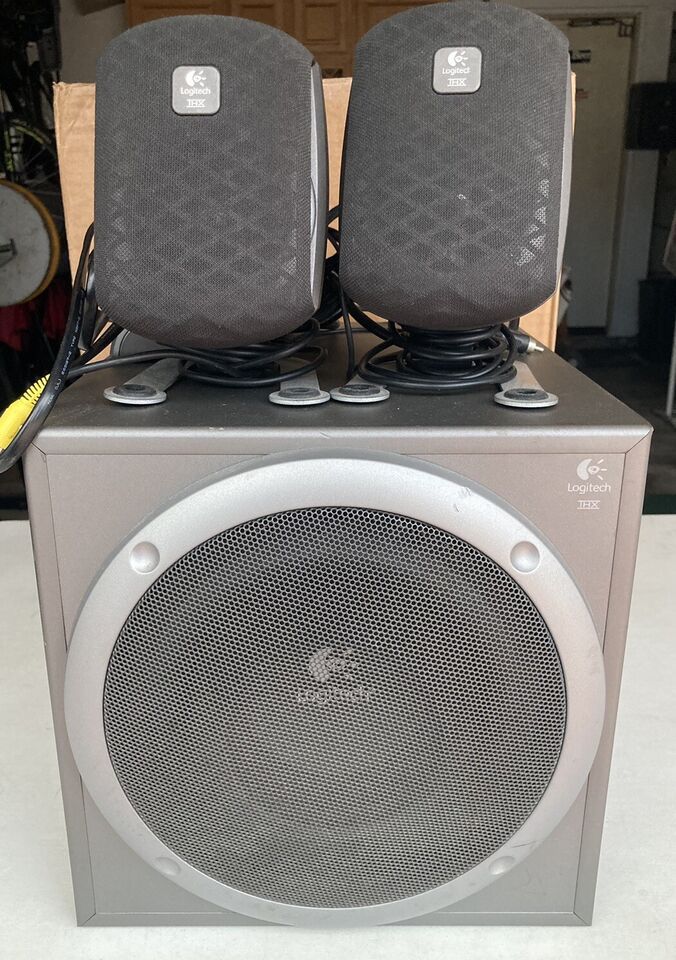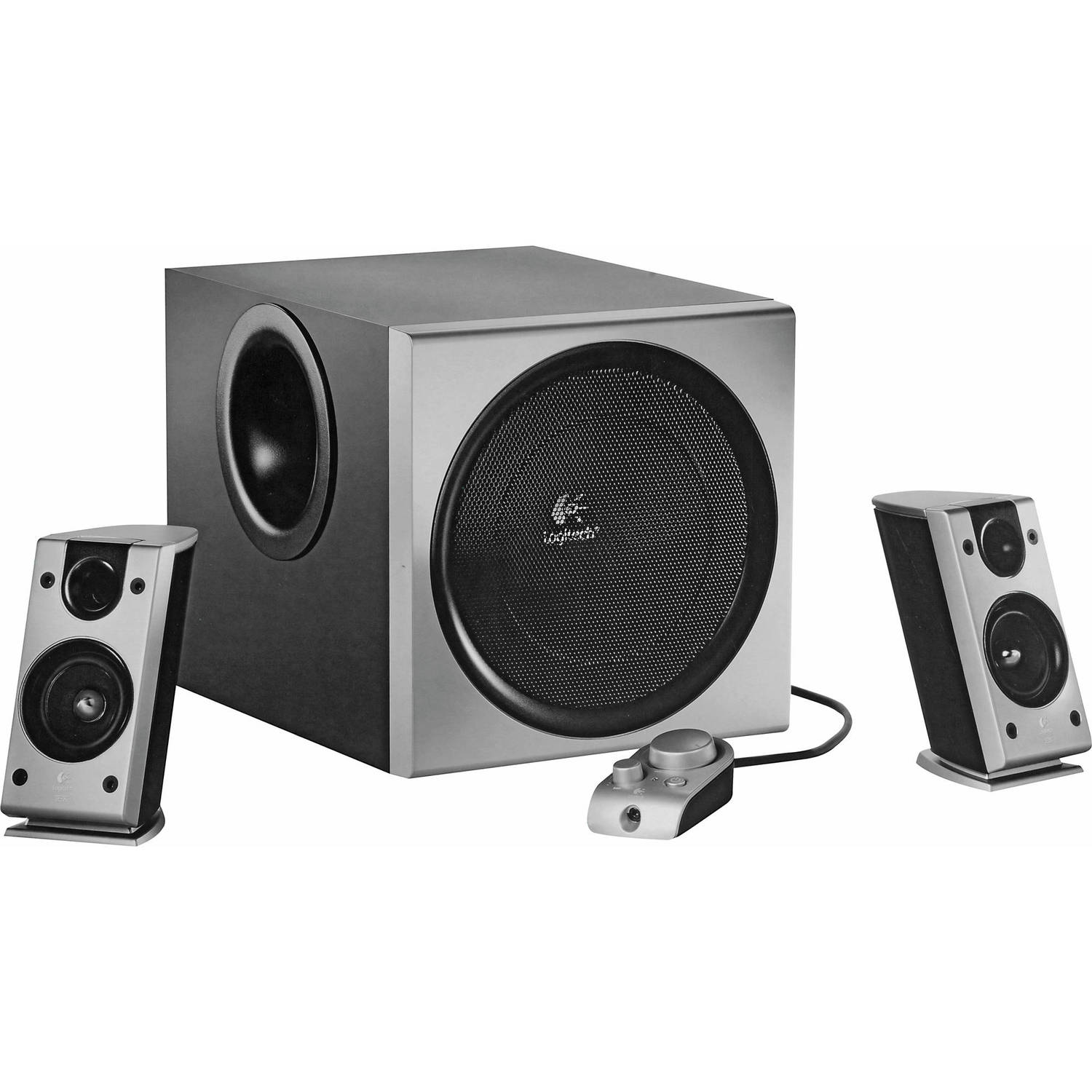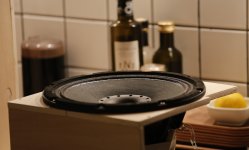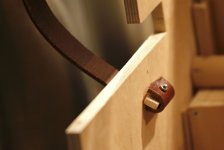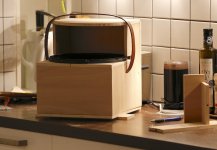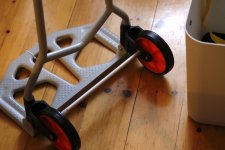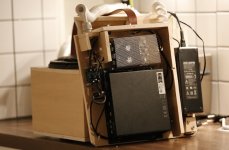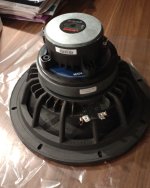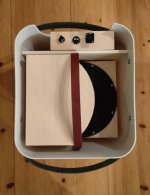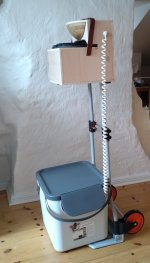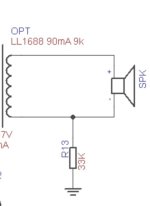I built this in 2007, with a lot of help here from Jay and Zaph particularly with the crossover. I thank these guys most sincerely!
Design was constrained by WAF to about 8.5 inches wide, about 12 inches deep and 1 metre high, also by the amp, my 45 parallel SET giving 3.5 watts (note the decimal point). Don't query the amp unless you've heard a 45 SET, if you have you will understand. Room is 18ft x 14ft.
The speaker is about 42 litres, bass reflex to give good sensitivity.
The Q of the bass driver was calculated allowing for amp Zout, giving Qts 0.51 quite high. This made bass alignment a bit of a problem; the ideal volume for a standard alignment became massive. But it was overcome with use of WINisd. With my volume it was not possible to avoid a hump in the bass, but tuning the port to 30Hz got the hump to below 1dB. Group delay was under 10mS at 40Hz (Zaph's criterion), and if I remember, the peak in group delay was moved to quite a low frequency and was not too massive. In fact this is very much Zaph's 'lean and low' tuning; low is obvious, and lean I take to mean removing or minimising the hump at roughly 80 to 100Hz.
Crossover was very similar to Zaph's one for his MTM with Vifa woofers and 27TDFC, virtually as Jay's suggestion; very simple:
Woofers 1.35mH, 40uF
Tweeter 1.9 ohm series R, 12uF, 0.39mH
The L on the woofers adjusted by ear for BSC, starting value 1.4mH was very good.
Tweeter C was adjusted after SPL measurement to reduce a slight dip in the upper crossover region.
The result?
Superb.
Bass is very good, adequate quantity, reasonable depth, very good quality; nothing boomy; tight, tuneful, fast. I had expected to want to try different port lengths, or straws or damping, but once I heard it I told myself, do not mess with anything! (I've messed electronics up in the past and never got back to the best).
Overall, sound is tuneful, fine tonality, good rhythms, excellent leading edges (says a critical friend who loves leading edges and dynamics); superb vocals. Highly musical. Just seems to do lots of things right in a way that you don't notice them, they disappear.
I like the combination of amp and speakers a whole lot, and I'd put it this way.
In hifi, you might have decent hifi sound.
Go a level higher, and it sounds like better hifi, you notice the hifi things more.
But at a higher level still, I find it sounds less like hifi; I don't notice the hifi things, they go away, leaving a very natural presentation.
These speakers are getting close to doing that.
Liked a lot by hifi addict friends; a Naim addict dynamics freak says they have some dynamics and rhythms (and he's critical, blunt with it, like Craig Revel Horwood, for my own good, and he knows his stuff).
The system does not sound underpowered in any way; for one thing the amp sounds more powerful than my 300B SETs of twice the power. Definitely all the volume I want, without stress.
Anyway, I can recommend this design to anyone who wants to build speakers for a SET amp and is constrained by WAF.
You will soon understand why I'm posting about these speakers many years after the event.
The system is pretty good.
Sources:
Teres turntable (acrylic/lead platter), Moerch DP8 arm, Zyx 4D, far better than previous LP12; good valve phono stage.
Marantz CD65 II (TDA1541A dac chip), lots of caps upgrades, NOS converted, lampizated; superb tonality, great sound.
Valve preamp with 27 triode
45 parallel single ended amp, separate PSUs for the two stages, massive PSUs, both 2 pi with chokes, film caps, tuned for fast clean transient response.
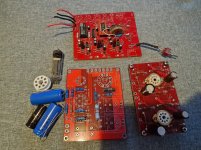
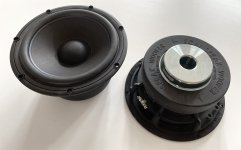
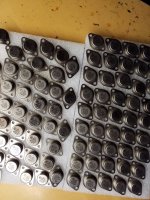
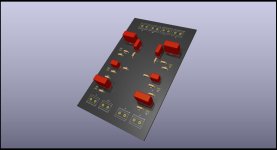
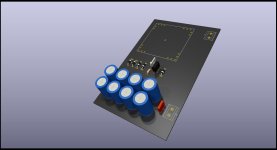
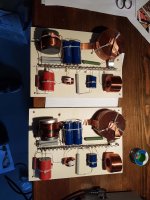
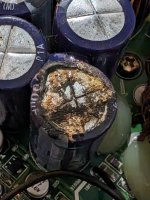
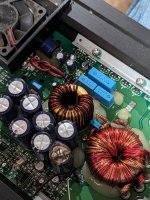

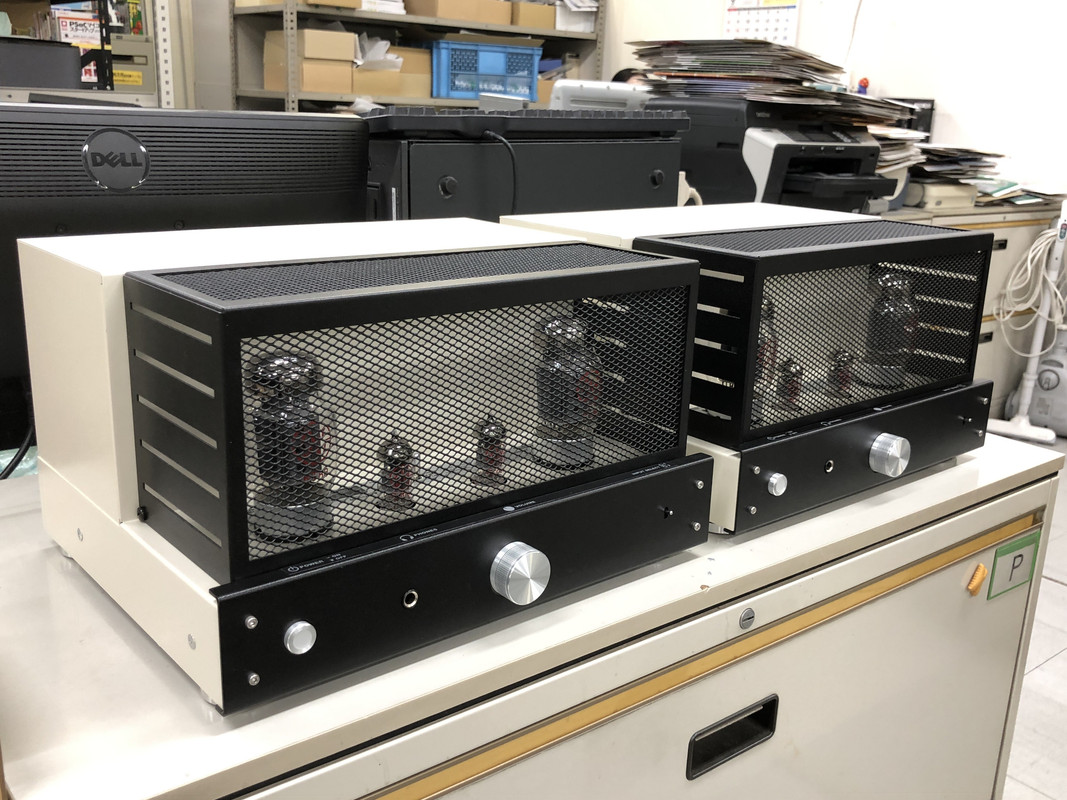
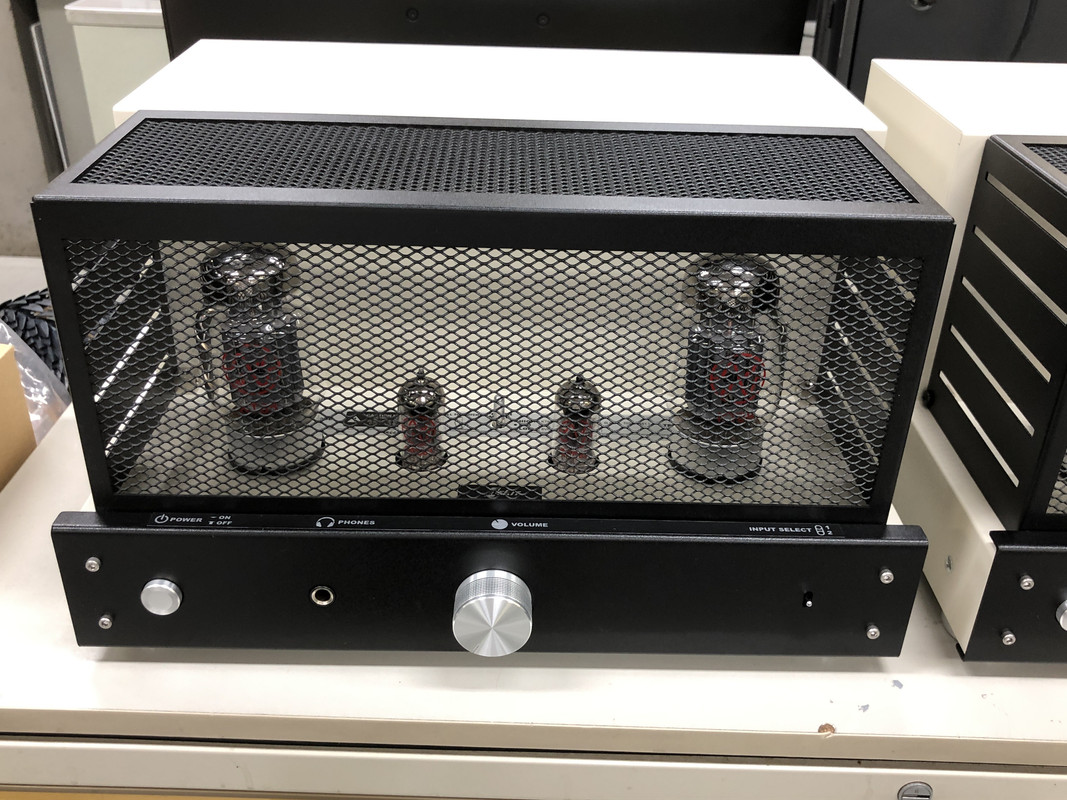
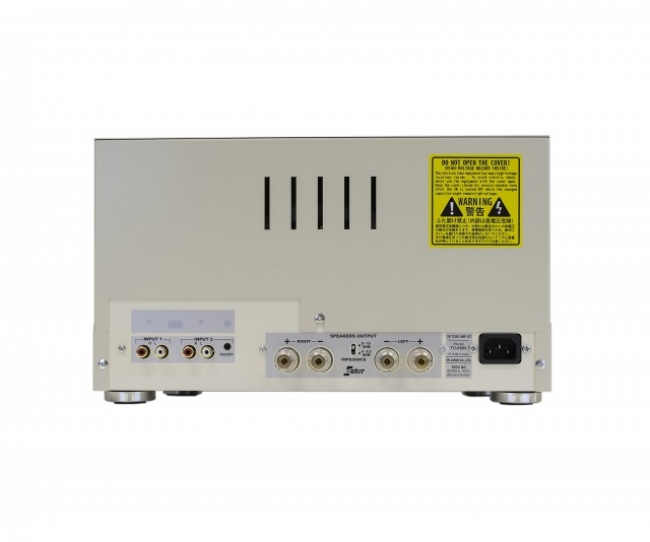
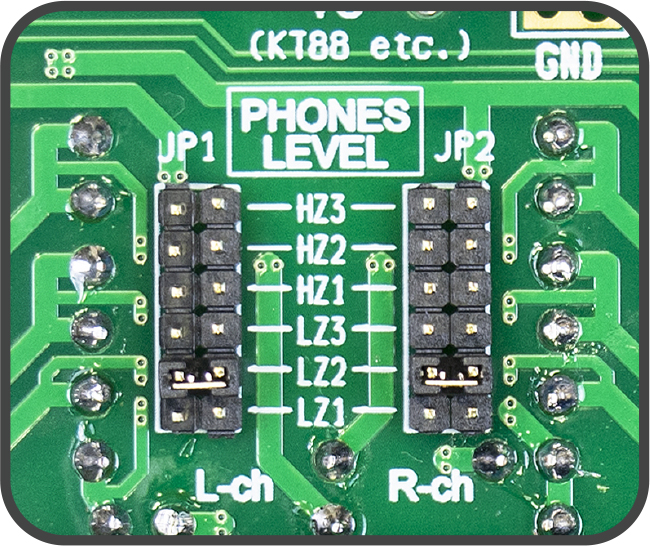


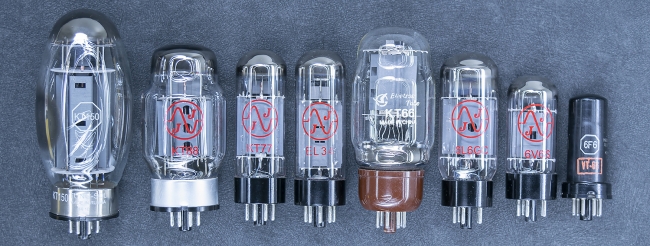
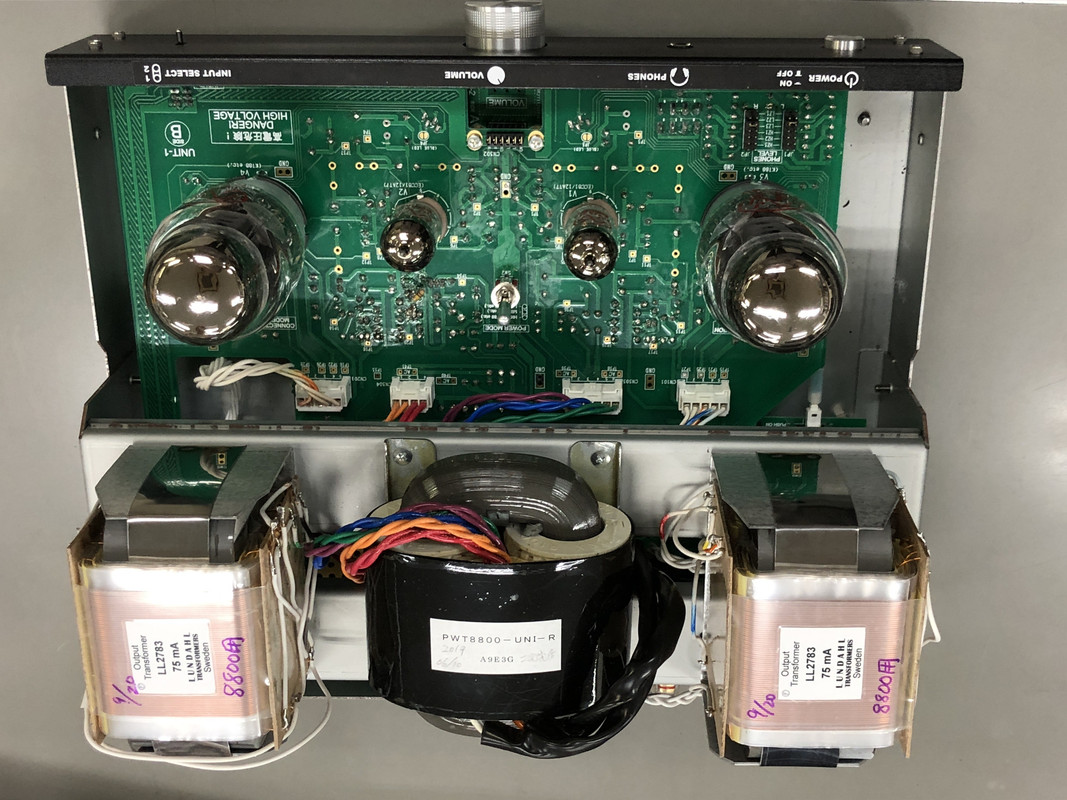

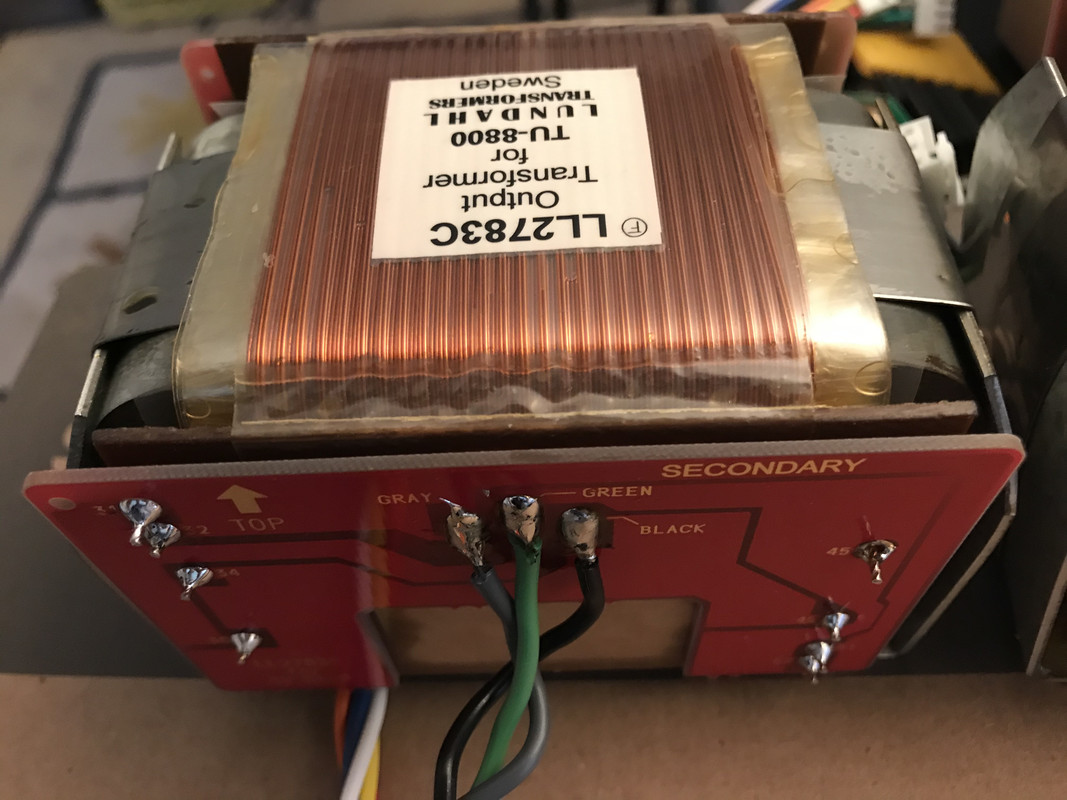
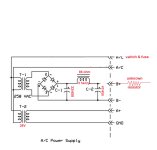
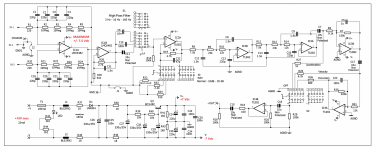
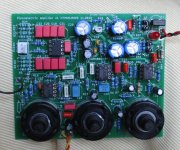
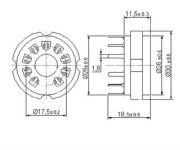

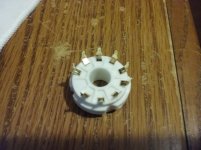
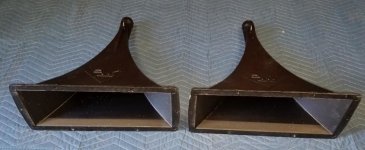
 diyAudio moderation team
diyAudio moderation team